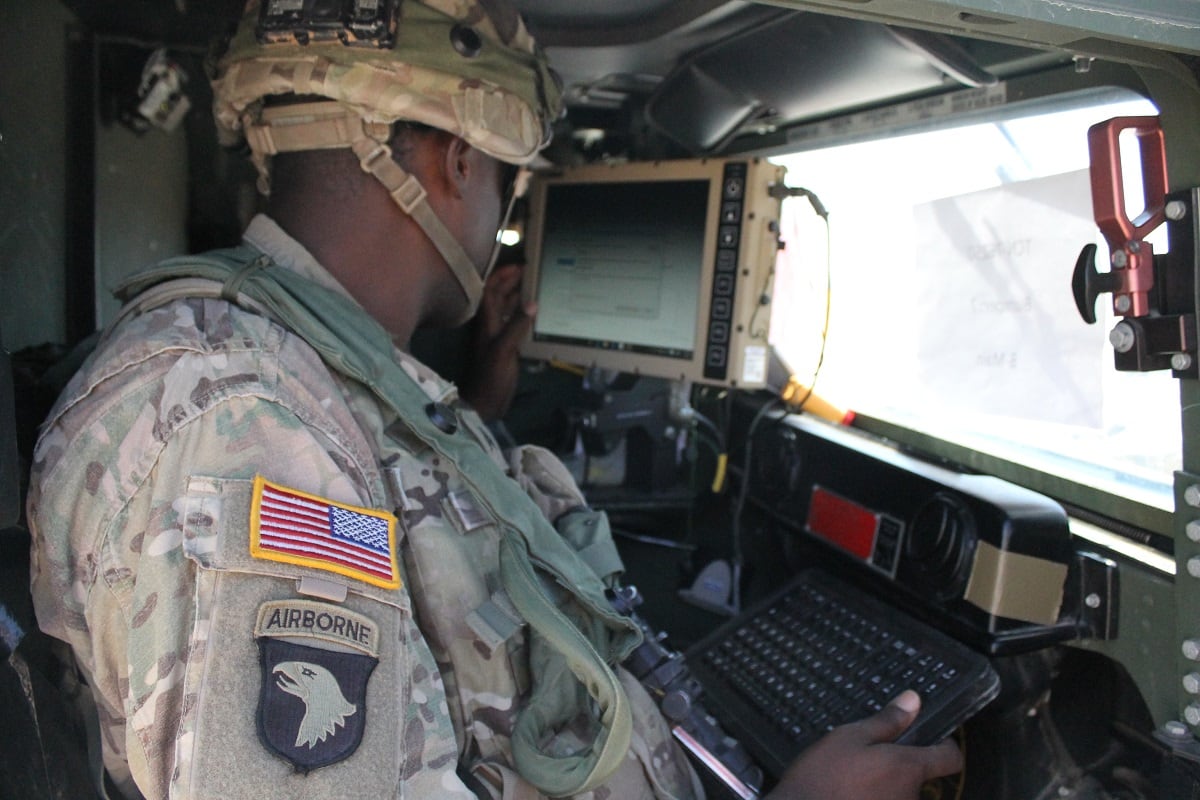This is the first article of a two-part series.
Army leaders used the AFCEA Army Signal Conference in Springfield, Virginia this week to emphasize that the service wants to change is the way it buys and equips forces from an IT and communications perspective.
The Army recently finished its high profile review of the tactical network in which it charted a “halt, fix, pivot” approach for the future.
While officials have maintained the tactical network as a whole worked as designed, with the return of so-called great power competition, WIN-T is no longer what the service needs for the future.
“When it comes to communications, the network, WIN-T was built for a specific fight – the [counterinsurgency] fight where we knew or believed or we assumed that we would own the electromagnetic spectrum,” Lt. Gen. Paul Ostrowski, principal military deputy to the assistant secretary of the Army for acquisition, logistics and technology, said March 7. “So guess what? Crimea happened. And what did we learn? We learned that the Russians had studied us. they understood our tactics, our techniques, or procedures over the last 16 years of war and they did exactly what we would do – they found, fixed and finished. To devastating effects.”
So what is the Army doing? For months, officials have hinted that large programs of record within IT and communications might be a thing of the past because it is often difficult to insert technology refreshes and advancements.
“The Army has been reviewing all current and potentially new programs that support the network,” Lt. Gen. Bruce Crawford, CIO/G6, told C4ISRNET via a written emailed response. “As we move forward in modernizing our network we are pursuing a ‘modernization in service’ approach, a separate funding line not associated with a program of record, which provides more flexible funding and enables us to insert evolving technology into our network while simultaneously operating on the network.”
Other officials at the conference pointed to tangible changes the Army has taken in this regard.
“Now [the PM tactical radio] is a capability set that, theoretically, different vendors could enter in and out of to provide a service, capability,” Brig. Gen. Brian J. Mennes, director of force management for the Army’s deputy chief of staff, said March 6.
“If I create a big program thinking I’m going to buy all those radios for the Army, that puts me in a high acquisition category,” he added. “If you can keep the lines shorter, shorter marriage of commitment, I think we can iterate.”
Standards of record
One phrase that has emerged in Army acquisition circles over the past few months is the term “standards of record.”
We’re “thinking about programs a little differently. Not necessarily thinking about them as programs of record, but standards of record,” Maj. Gen. John George, director of force development in the office of the Army’s deputy chief of staff, said March 7.
Crawford, has also used this phrase in the past noting “This idea of a program of record is going to migrate to a standards-of-record kind of mindset … That allows us to take advantage of open architectures. It allows us to take advantage of other commercial and industry standard vice this program of record mindset that we’re going to field for 35 or 40 years in our formations.”
George likened the standard of record mindset to a highway. This means the Army would establish rules, everyone would understand what the rules are, what vehicles can and can’t drive on the highway and they must have the police to enforce the standards.
The Army’s solution is to begin buying smarter to both allow greater flexibility to insert new technologies when possible and field the latest and greatest to units that need it.
“We figured out it wasn’t just what we were buying but how we were buying that caused us to be in this situation that we’re in,” Crawford told the conference March 6. “I don’t believe as an institution we actually had our sensors in the right places to be able leverage the might of commercial industry.
“Absent knowing what technology is available, absent a clear eyed and sober view of the playing field to understand what was in the art of the possible what did we do? We bought as much technology as quickly as we can via operational needs statements and we got it in the hands of soldiers.”
And therein lies the problem, he said.
Part two will focus on how the Army is looking at a “tiered readiness” approach.
Mark Pomerleau is a reporter for C4ISRNET, covering information warfare and cyberspace.








